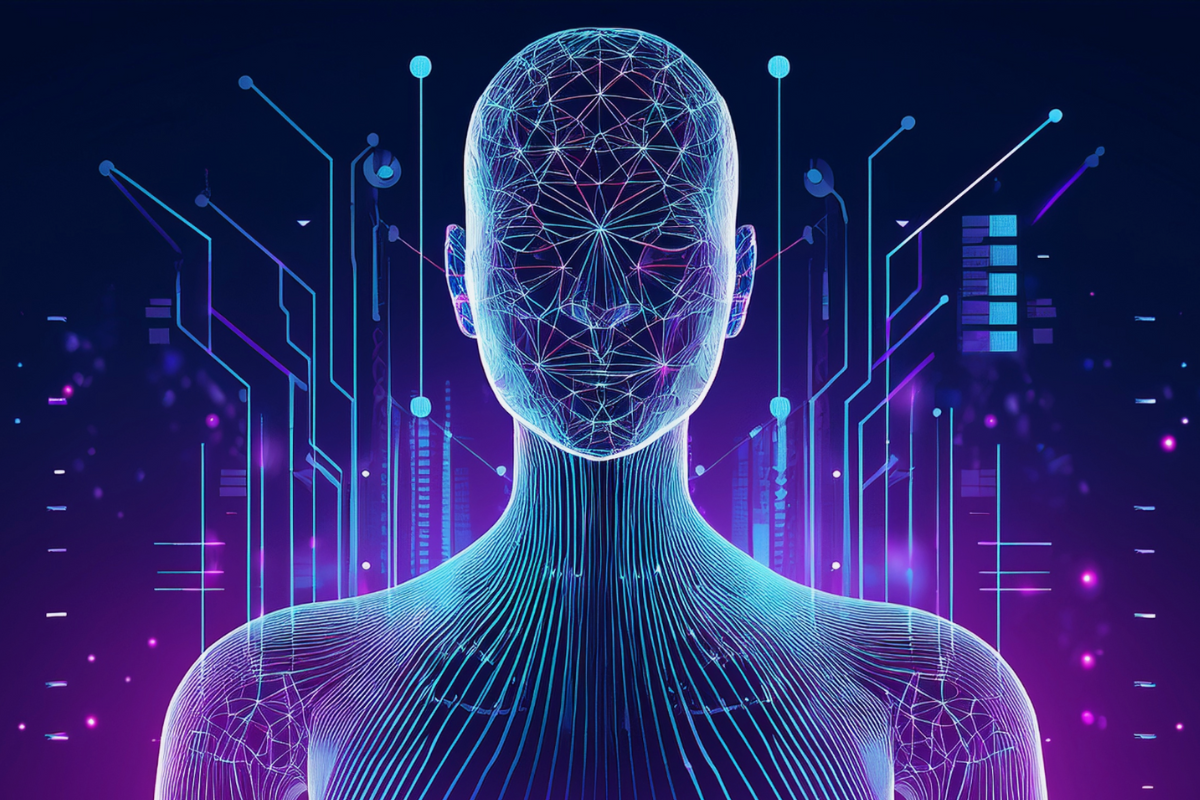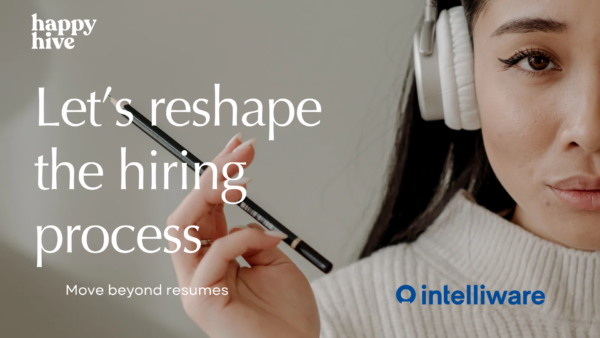AI isn’t here to replace your team; it’s here to take tedious work off their plate. Implemented correctly, AI agents handle the drudgery and crunch data with accuracy, freeing your people to focus on creative, strategic tasks that drive the business forward. In one survey, 36% of workers said they fear losing their jobs to AI, yet only about 1.5% of jobs are forecast to be lost to AI by 2030, while nearly 7% will be influenced or altered by AI instead. In other words, AI’s real impact is not mass layoffs, but a fundamental reshaping of how work gets done. Business leaders who embrace this shift see operational efficiency rise and employees more engaged in high-value projects. The key is a human-centric, outcome-oriented approach: treat AI systems as co-workers under human oversight, upskill your staff to work alongside AI, and enforce strong governance so AI decisions remain trustworthy and aligned with your goals.
“AI isn’t here to replace your team; it’s here to take tedious work off their plate.”
AI is here to collaborate with your team, not replace them

It’s natural for employees to worry that artificial intelligence could render their roles obsolete. In practice, though, successful organizations are positioning AI as a collaborator rather than a competitor to their workforce. Yes, AI will automate certain tasks, but entire jobs more often evolve than disappear. For example, when a customer support chatbot handles routine inquiries, it doesn’t eliminate the customer service team; it gives human agents more time to solve complex issues and build customer relationships. Rather than viewing AI as an “employee replacement,” leading firms see it as a teammate that excels at what humans find mundane or impossible at scale (like analyzing millions of data points), while humans continue to do what machines can’t. Creative thinking, empathy, and making judgment calls in ambiguous situations.
Experts reinforce this collaborative view. Gartner researchers note that many dire warnings about AI “confuse AI with automation,” overshadowing the biggest benefit of AI: augmentation, where human and AI talents complement each other. In an augmented workforce, an AI might draft a report overnight, but a human refines the narrative and makes the strategic decisions in the morning. New roles also emerge alongside AI, from data curators to AI ethicists , ensuring humans remain at the center of decision-making. Forward-looking companies communicate this message clearly to their teams: AI is a tool for employees, not a replacement of employees. By actively involving staff in AI initiatives (for instance, pilot programs where employees team up with AI tools to improve a process), organizations can turn fear into excitement. When people see that an AI “co-worker” lightens their workload and helps them shine in their expertise, they become more willing to embrace these systems. The result is a collaborative dynamic where Aiamplifies human strengths, and the whole team becomes more productive and innovative than before.
Automating repetitive work frees your team for strategic tasks
Day to day, highly skilled employees often find themselves bogged down in repetitive work that doesn’t fully utilize their talent. Studies show knowledge workers waste over 40% of their time on manual digital administration, and 75% feel that automating those chores would be a far better use of their skills. Offloading these rote tasks to AI isn’t just a productivity play; it’s a chance to let your team focus on the big-picture projects that really matter. Modern AI agents and robotic process automation can reliably handle a wide range of routine duties. Here are a few areas where automation can take over the grunt work:
- Data entry and processing: AI systems can capture data from forms, update records, and reconcile information across systems. By eliminating hours of copy-pasting and spreadsheet upkeep, your analysts can concentrate on interpreting data and advising on strategy, rather than wrangling it.
- Scheduling and coordination: From calendar management to automated email follow-ups, AI assistants can manage meeting schedules, reminders, and basic communications. This reduces the back-and-forth busywork for your team, so they spend less time coordinating and more time executing plans.
- Report generation and drafting: Aitools can generate initial drafts of routine reports, compiling figures, creating charts, even writing summary paragraphs. Instead of manually preparing weekly updates or status reports, employees can review the AI’s draft, apply their insights, and quickly move on to higher-value analysis.
- Customer self-service queries: AI chatbots and voice assistants can resolve common customer questions (password resets, order status, FAQs) instantly. This frees customer support professionals to handle the more complex, relationship-focused interactions that AI can’t fully address, improving service quality and customer satisfaction.
- Monitoring and alerts: AI agents excel at 24/7 monitoring , whether it’s tracking network performance, flagging transactions that look fraudulent, or watching manufacturing sensors for anomalies. They can instantly alert human staff to issues or even resolve simple ones autonomously. Your team is relieved from tedious surveillance roles and can focus on responding to the most critical events and improving processes proactively.
- Compliance checks and data validation: Instead of employees painstakingly verifying data accuracy or policy compliance, AI can continuously scan for errors or exceptions (e.g. expense reports that don’t meet policy, or data entries outside expected ranges). This not only reduces mistakes but also liberates staff to spend time on preventive controls and addressing the root causes of compliance issues.
With AI agents taking on these repetitive tasks, work gets done faster and often with fewer errors. More importantly, your talented employees reclaim hours in their day to solve problems, brainstorm new ideas, and engage in planning and innovation. Automation becomes the ally of creativity: when an algorithm handles the drudge work of compiling figures or routing forms, your people can apply their expertise to interpret those figures or design a better workflow. It’s no surprise that 65% of knowledge workers feel less stressed at work when they automate tedious tasks. By reducing burnout and frustration, AI not only boosts operational efficiency but also improves morale. Your team members see their roles elevated; they become strategists, creative thinkers, and relationship builders, with AI as a supportive utility working in the background. In the end, the organization benefits from both higher productivity and a more engaged, forward-thinking workforce.
“Offloading these rote tasks to AI isn’t just a productivity play; it’s a chance to let your team focus on the big-picture projects that really matter.”
Upskilling teams to collaborate effectively with AI

Introducing AI into the workplace isn’t a plug-and-play victory; it demands new skills and ways of working. To truly unlock a human+AI partnership, companies must invest in upskilling their people. This doesn’t mean turning every employee into a data scientist, but it does mean ensuring everyone is comfortable using AI tools and understanding their outputs. Effective upskilling spans technical training, process changes, and cultural shifts. Below, we break down how to empower your team to work confidently alongside AI:
Build AI literacy across the organization
The first step is demystifying AI for your workforce. Teams should learn, in plain language, what AI and machine learning can and cannot do. Offering workshops or interactive demos helps employees see AI in action, solving relevant business problems. For example, a finance team might learn how an AI model forecasts revenue, or a marketing team might explore an AI content generator. By building basic AI literacy, you reduce fear of the unknown. Employees come to understand that AI outputs are based on data and patterns , not magic , and they learn how to interpret recommendations from an AI agent. This foundation of knowledge makes collaboration much smoother: a project manager who knows an AI scheduling tool’s capabilities and limits will trust it for routine tasks and spot when human judgment is needed. Company-wide AI literacy programs, possibly led by internal champions or external experts, create a common comfort level so that AI becomes a normal part of the toolset, not an intimidating black box.
Provide hands-on training and pilot projects
Education needs to move from theory to practice. Hands-on training sessions give employees the opportunity to actually use AI tools related to their roles. This could involve training certain staff as “citizen developers” who learn to automate simple workflows with AI, or upskilling analysts to use advanced analytics platforms. Many organizations start with pilot projects or sandbox environments: for instance, a small team might pilot an AI-based customer service assistant. During the pilot, team members get training and then work with the AI day-to-day, learning how to interpret its suggestions or correct its mistakes. These practical experiences are invaluable; people often learn best by doing. As they experiment, employees discover how to integrate AI into their workflows and where the boundaries are. It’s also important to encourage cross-functional learning. Pair up domain experts with data scientists or AI specialists so they can learn from each other , the domain expert picks up technical skills, and the technologist gains context about business needs. Through continuous practice and iterative pilots, your team builds confidence. Success stories from these initiatives (like an accounting team that saved hours using an Aitool for invoice processing) can then be scaled to other departments, creating momentum for broader skill development.
Foster a culture of continuous learning and trust
Upskilling for AI isn’t a one-and-done event , it’s an ongoing mindset. Technology will keep evolving, so instill a culture where employees are encouraged to keep learning new tools and techniques. This could mean giving your team access to online AI courses, hosting monthly “lunch and learn” sessions on emerging AI topics, or sending employees to relevant conferences and certifications. Recognize and reward individuals who find novel ways to use AI in their work, this signals that the company values human initiative in leveraging technology. Importantly, leadership should communicate a clear message throughout these efforts: that the goal of introducing AI is to augment the team, not to cut headcount. When employees trust that AI adoption is meant to empower them, they’re more likely to actively engage in upskilling. Managers should set the example by embracing AI tools themselves and sharing how it helps them in their roles. Over time, as people see AI’s positive impact and feel their own skills expanding, the organization develops a growth mindset around technology. Staff at all levels become more adaptable, and the company becomes much more adept at deploying new digital solutions. In essence, you cultivate a workforce that’s not only skilled in using AI, but also resilient and curious, ready to evolve alongside whatever new tools the future brings.
Align AI with human oversight and clear goals to deliver measurable outcomes
Deploying AI in enterprise teams requires more than technical implementation; it demands a strong framework of oversight and purpose. No matter how autonomous or “smart” an AI agent becomes, it must operate under human supervision and transparent rules. Think of AI as a junior colleague , talented but in need of guidance. You wouldn’t let a new hire make decisions with serious business or ethical implications without oversight, and the same goes for AI. Human oversight means establishing checkpoints where people review AI-driven decisions, especially in high-stakes areas like approvals, medical diagnoses, or hiring recommendations. This practice isn’t about mistrusting technology; it’s about accountability and trust. When employees know there’s a human in the loop, they’re more likely to trust the AI’s presence in their workflow. In turn, proper oversight catches errors or biases that an AI may introduce. This need for governance will only grow as AI systems take on more decision-making , Gartner predicts that by 2028, at least 15% of day-to-day work decisions will be made autonomously by “agentic” AI agents (up from essentially 0% in 2024). In other words, a chunk of routine business decisions might soon be handled start-to-finish by AI. That makes it absolutely critical to set boundaries: clearly define which decisions AI is allowed to make and which require human sign-off, implement audit trails for AI actions, and create ethics committees or AI governance boards to oversee algorithmic policies. Without these safeguards, even your own staff may resist AI; over 75% of employees doubt that their organization’s future use of AI will be ethical. Strong oversight and ethical guidelines directly address this concern, showing your team (and customers, regulators, etc.) that AI is being used responsibly under human watch.
Oversight alone, however, is not enough; AI initiatives also need clear goals and metrics from day one. Align each AI agent or system with a specific business outcome that leadership cares about. For example, if you deploy an AI agent in IT support, define success in terms of faster ticket resolution times or higher user satisfaction scores, and track those indicators. By setting concrete targets (reduce processing errors by 30%, increase sales leads by 20%, etc.), you give the Aia North Star and your team a way to measure its value. This approach prevents the common pitfall of adopting technology for technology’s sake. Instead, every AI project is tied to outcomes like cost savings, revenue growth, risk reduction, or customer experience improvement. Regularly monitor performance against these metrics and be ready to adjust. If an Aitool isn’t hitting the mark, say an automated invoicing system isn’t actually speeding up cycle time , you can recalibrate the model or the process it’s embedded in. Clear goals also help in maintaining human AI alignment: when people see that an AI’s role is to achieve the same goals they are accountable for, it becomes part of the team working toward shared KPIs. This fosters cooperation rather than competition between employees and AI. Moreover, goal alignment simplifies communication up the management chain , CIOs and CTOs can demonstrate the ROI of AI by pointing to objective improvements. Ultimately, pairing robust human oversight with outcome-driven objectives ensures that AI agents operate safely and effectively. Your organization gets the best of both worlds: automation that delivers tangible business results, and governance that maintains trust and compliance. When AI is both well-managed and clearly value-oriented, it ceases to be a risky experiment and becomes a reliable engine for productivity and innovation.
Electric Mind helps build a human‑centric AI culture in teams

Translating principles like strong oversight and outcome-focused AI into practice often requires the right expertise and guidance, and this is where Electric Mind comes in. Electric Mind works with CIOs, CTOs, and business leaders to embed AI as a true co-worker in their organizations, not just a piece of new software. We bring engineering-led insight and decades of delivery experience to ensure that AI initiatives are implemented pragmatically, securely, and with human interests at the forefront. For example, our teams help you establish governance frameworks from day one: clear ethical guidelines, audit mechanisms, and human-in-the-loop processes that make your employees confident in AI-driven decisions. At the same time, we align every Aideployment to the metrics that matter , whether it’s reducing claim processing time in an insurance firm or improving reliability in a supply chain, so you can immediately measure value. Electric Mind’s philosophy is outcomes over hype: we don’t do automation for its own sake, we design it to move the needle on your strategic goals.
Crucially, Electric Mind also partners in the people aspect of this transformation. Our multidisciplinary experts co-create upskilling programs and change management strategies tailored to your culture. That might mean rolling up our sleeves alongside your operations team to pilot an AI agent and train staff on it, or equipping your managers with playbooks for fostering an AI-positive, collaborative mindset. We treat AI adoption as a team sport , our role is to coach and enable your talent, not to displace it. And with deep experience in regulated industries, we ensure that speed never comes at the expense of security, compliance, or ethics. Electric Mind’s approach is rooted in transparency and trust: from exposing how an algorithm makes decisions to implementing bias checks, we help build systems your employees and regulators can trust. In the end, our goal is simple: to help you harness AI in a human-centric way that amplifies your team’s strengths. By combining visionary strategy with hands-on engineering execution, Electric Mind enables organizations to achieve AI-powered efficiency without sacrificing oversight, human creativity, or accountability. The result is a future-ready operation where people and AI collaborate seamlessly, delivering measurable business value and ushering in a work culture that is empowered, not threatened, by technology.
Common Questions
How will AI agents impact my current workforce?
AI agents are designed to enhance your workforce by removing repetitive, low-value tasks, not replace people outright. They allow your team to focus on strategy, customer experience, and problem-solving. Rather than eliminating roles, they shift responsibilities toward higher-impact activities. With the right oversight and upskilling, your team can work with AI agents to achieve more meaningful outcomes. Electric Mind helps organizations make this transition smooth, effective, and grounded in measurable business value.
What are some early use cases of AI agents in enterprise teams?
AI agents are already handling high-volume, repeatable tasks like data entry, report drafting, IT support, and customer service queries. These systems can also assist in monitoring performance, validating compliance, and accelerating internal workflows. Their impact is most visible when integrated thoughtfully into operations rather than treated as stand-alone tools. With the right implementation approach, guided by Electric Mind’s engineering-led delivery, these use cases translate into real operational efficiency.
How do I prepare my team to work with AI agents?
Your team needs to understand how AI works, how to use it safely, and how it supports their role. Start with education on AI basics, follow with hands-on training tailored to your processes, and support continuous learning. Upskilling is less about technical depth and more about practical fluency. Electric Mind helps organizations roll out contextual, cross-functional training programs that align AI capabilities with employee strengths.
How do I ensure AI agents remain trustworthy in sensitive workflows?
Trust comes from consistent governance, transparent systems, and clear human oversight. Define boundaries for AI decision-making, implement audit trails, and regularly review performance and fairness. Strong ethical guidelines and ongoing review build confidence across your teams and regulators alike. Electric Mind helps enterprise teams establish and maintain this trust through robust governance frameworks embedded from day one.
Can AI agents align with our business KPIs and compliance needs?
Yes , when deployed properly, AI agents can be configured to operate within your policy limits and deliver on specific operational goals. It’s important to tie every deployment to measurable metrics like time saved, error reduction, or improved user experience. With Electric Mind’s focus on outcomes over hype, Aisystems are custom-fit to meet compliance requirements and deliver business impact across departments.




.png)
.png)
.png)
